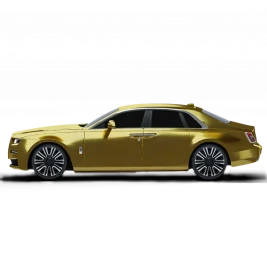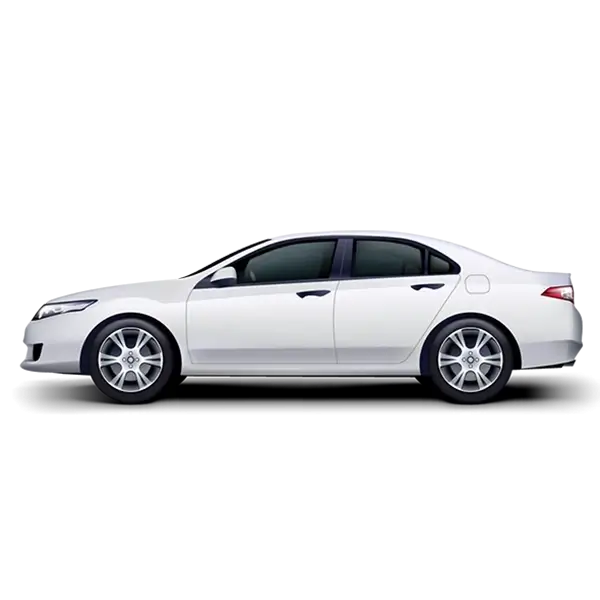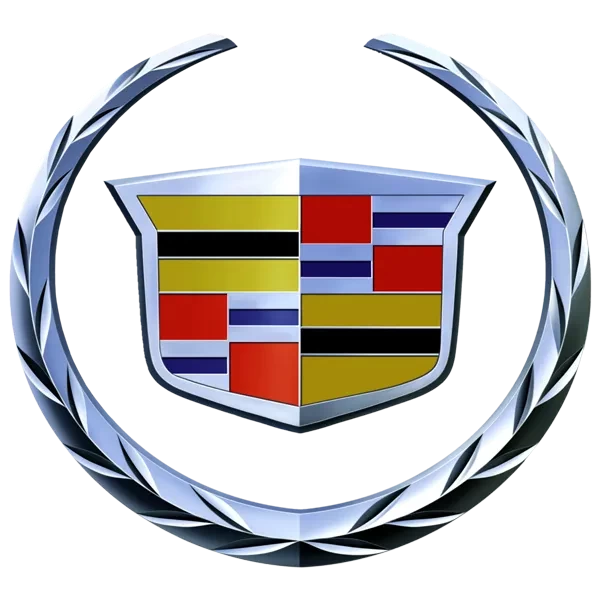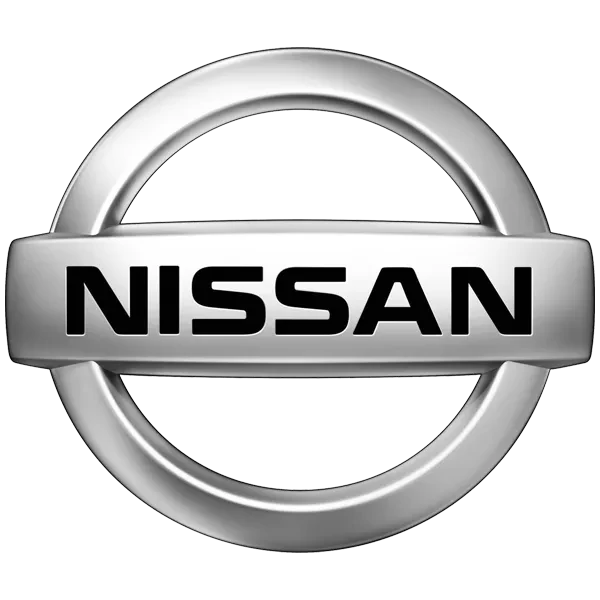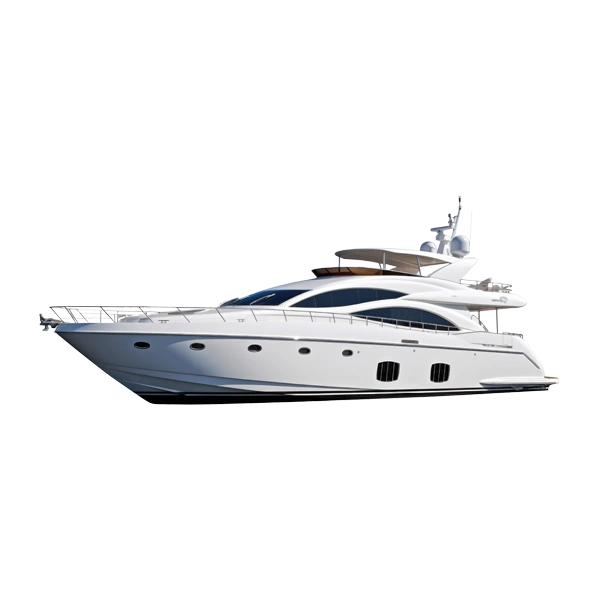Most Common Nissan Problems and Solutions
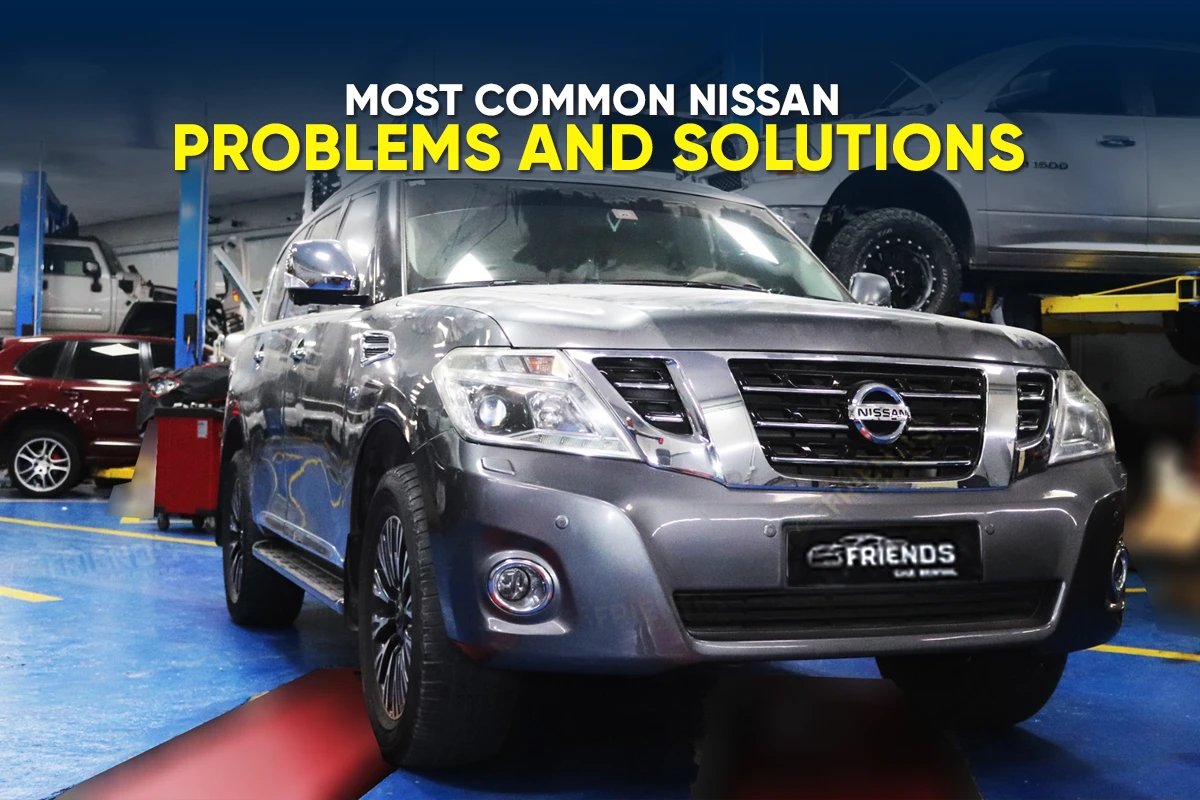
Nissan—Dubai’s one of the most loved auto brands is a symbol of commitment to quality, innovation, and reliability. However, even this remarkable Japanese auto giant’s lineup faces a range of issues, from engine stalls to airbag sensor failures, which trouble its customers. Whether you currently own a Nissan or plan to do so in the future, you must be informed of these most common Nissan problems and solutions. This comprehensive guide explores category-based issues and breaks down their solutions to ensure a stress-free Nissan ownership. Let’s dissect the issues and keep your drive seamless.
Nissan’s 25 most common problems and solutions:
Engine Oil Leaks
Engine Stalling
Timing Chain Failure
Faulty Fuel Pump
Faulty O2 Sensors
CVT Transmission Failure
Transmission Hesitation/Jerking
Radiator Coolant Leaks
Alternator Failure
Battery Drain
Battery Terminal Fuse Problems
Infotainment System Freezing
Airbag Sensor Failure
Hood Latch Failure
Brake Pedal Vibration/Noise
Power Steering Fluid Leaks
Steering Wheel Shudder
Suspension Strut Noise
Paint Chipping/Peeling
Windshield Cracking Easily
Sunroof Leaks
AC Compressor Failure
Window Regulator Issues
Door Lock Actuator Problems
Catalytic Converter Failure
Engine Problems
1. Engine Oil Leaks
What Happens: Oil drips from under the car, leaving puddles on the ground after parking. A burning smell or smoke may come from the engine. Dashboard warning lights often signal low oil levels.
Why It Occurs: Gaskets or seals wear out over time. High engine temperatures or skipped maintenance accelerate leaks.
Impact: Low oil damages engine components, risking failure. Repairs become expensive if ignored.
How to Fix: Check oil levels monthly and top off as needed. Visit a Nissan service center to replace faulty gaskets or seals. Follow the owner’s manual maintenance schedule to prevent leaks.
Affected Models: Altima (2013–2020), Rogue (2014–2022), Sentra (2016–2023).
2. Engine Stalling
What Happens: The engine stops running suddenly while driving or idling, causing a loss of power. Restarting may be difficult. This feels abrupt and disrupts driving.
Why It Occurs: Faulty crankshaft or camshaft sensors misfire. Fuel delivery issues or poor maintenance contribute.
Impact: Stalling creates unsafe driving conditions. Engine damage may occur if unresolved.
How to Fix: Schedule a diagnostic check at a Nissan dealer to test sensors. Replace defective parts promptly. Regular maintenance reduces stalling risks.
Affected Models: Rogue (2014–2020), Sentra (2016–2021), Pathfinder (2015–2022).
3. Timing Chain Failure
What Happens: A rattling noise comes from the engine, especially during startup or acceleration. The car may misfire or lose power. Severe cases lead to engine failure.
Why It Occurs: Timing chains stretch or wear out over time. Inadequate lubrication or design flaws cause this.
Impact: A failed chain disrupts engine timing, causing damage. Repairs are costly and extensive.
How to Fix: Inspect the timing chain during routine maintenance. Replace it at a Nissan service center per the manual’s schedule. Address rattling noises immediately to avoid engine failure.
Affected Models: Altima (2013–2018), Sentra (2013–2017), Versa (2015–2019).
4. Faulty Fuel Pump
What Happens: The car sputters, hesitates, or stalls, particularly at low speeds. Starting becomes challenging or impossible. Acceleration feels inconsistent.
Why It Occurs: Fuel pumps clog or wear out, blocking fuel delivery. Contaminated fuel speeds up failure.
Impact: Stalling risks accidents and strands drivers. Pump replacement costs are significant.
How to Fix: Use high-quality fuel to avoid clogs. Have a Nissan technician test and replace the pump. Check for recalls covering fuel system repairs.
Affected Models: Rogue (2014–2020), Altima (2015–2020), Sentra (2016–2021).
5. Faulty O2 Sensors
What Happens: The check engine light illuminates, and the car runs roughly or loses fuel efficiency. Acceleration may feel sluggish. Exhaust emissions increase noticeably.
Why It Occurs: Oxygen sensors fail due to wear or contamination. Harsh driving conditions accelerate this.
Impact: Poor performance raises fuel costs. Failed sensors may damage the catalytic converter.
How to Fix: Run a diagnostic scan at a Nissan dealer to identify faulty sensors. Replace them promptly to restore efficiency. Regular maintenance prevents sensor issues.
Affected Models: Altima (2013–2020), Rogue (2014–2022), Maxima (2016–2020).
Nissan Transmission Problems
6. Nissan CVT Transmission Failure
What Happens: The car shudders, slips gears, or loses power during acceleration. A whining noise may come from the transmission. Driving feels unresponsive or jerky.
Why It Occurs: CVT belts or pulleys wear out prematurely. Overheating or design flaws contribute.
Impact: Transmission failure renders the car undrivable. Repairs or replacements are expensive.
How to Fix: Check transmission fluid regularly and keep it clean. Visit a Nissan dealer for diagnostic tests. Recalls or extended warranties may cover CVT repairs.
Affected Models: Rogue (2014–2020), Sentra (2016–2021), Altima (2015–2020).
7. Transmission Hesitation/Jerking
What Happens: The vehicle hesitates when accelerating, causing delays or jerking motions. Shifting gears feels rough. Merging onto highways becomes challenging.
Why It Occurs: Faulty transmission software or worn components cause delays. Low or contaminated fluid worsens it.
Impact: Hesitation creates unsafe driving situations. Transmission damage requires costly fixes.
How to Fix: Ensure fluid levels are adequate and clean. Have a Nissan technician update software or repair components. Check for applicable recalls.
Affected Models: Rogue (2014–2020), Altima (2016–2020), Sentra (2016–2021).
Cooling System Problems
8. Radiator Coolant Leaks
What Happens: Coolant leaks under the car, forming puddles after parking. The engine overheats, and warning lights appear. Steam or a sweet smell may emerge.
Why It Occurs: Radiator hoses or seals crack over time. Corrosion or poor maintenance causes leaks.
Impact: Overheating damages the engine significantly. Repairs can be costly if delayed.
How to Fix: Inspect coolant levels weekly and refill as needed. Replace damaged hoses or radiators at a Nissan service center. Regular cooling system checks prevent leaks.
Affected Models: Rogue (2014–2020), Murano (2015–2022), Pathfinder (2015–2020).
Electrical Problems
9. Alternator Failure
What Happens: Dashboard warning lights flicker, and the car struggles to start. Electrical components like lights or radio dim or fail. The battery may die repeatedly.
Why It Occurs: Alternators wear out, failing to charge the battery. Harsh conditions or overuse accelerate this.
Impact: A dead battery strands drivers. Electrical failures disrupt vehicle operation.
How to Fix: Test the alternator at a Nissan dealer if the lights dim. Replace it promptly to avoid breakdowns. Regular electrical checks prevent issues.
Affected Models: Altima (2015–2020), Rogue (2014–2022), Sentra (2016–2021).
10. Battery Drain
What Happens: The battery dies quickly, even after charging, preventing the car from starting. Electrical accessories may malfunction. This happens when parked or driving.
Why It Occurs: Faulty wiring or parasitic drains sap battery power. Defective components contribute.
Impact: Frequent battery failures strand drivers. Repairs require extensive diagnostics.
How to Fix: Have a Nissan technician test for electrical drains. Replace faulty wiring or components. Avoid leaving accessories on when parked.
Affected Models: Rogue (2014–2022), Sentra (2016–2021), Murano (2015–2020).
11. Battery Terminal Fuse Problems
What Happens: The car loses all electrical power, preventing it from starting, and dashboard lights or accessories stop working. A blown fuse on the positive battery terminal is often found. Repeated fuse blowouts occur in some cases.
Why It Occurs: Corrosion from battery acid or water damages the fuse assembly. Short circuits in the alternator or starter wiring cause excessive current, blowing the fuse.
Impact: A blown fuse strands drivers, halting vehicle operation. Repeated failures lead to costly repairs.
How to Fix: Inspect the battery terminal for corrosion and clean it regularly with anti-corrosion spray. Replace the blown fusible link at a Nissan dealer, checking for recalls. Trace and repair shorted wiring to prevent recurrence.
Affected Models: Altima (2015–2020), Maxima (2016–2020), Sentra (2016–2023).
12. Infotainment System Freezing
What Happens: The infotainment screen freezes, reboots, or shows errors. Bluetooth or navigation stops working. Controls become unresponsive during use.
Why It Occurs: Software glitches disrupt the system. Outdated firmware causes instability.
Impact: Loss of features frustrates drivers. Hardware repairs can be costly.
How to Fix: Update infotainment software via Nissan’s website. Reset the system if frozen. Visit a dealer for hardware diagnostics or replacements.
Affected Models: Rogue (2014–2018), Altima (2013–2018), Murano (2015–2019).
Safety System Problems
13. Airbag Sensor Failure
What Happens: The airbag warning light stays on, indicating airbags may not deploy in a crash. Occupants face higher injury risks. Dashboard alerts persist.
Why It Occurs: Faulty sensors misread crash data. Wiring issues or defects cause failures.
Impact: Non-deploying airbags compromise safety. Repairs are critical for protection.
How to Fix: Check for airbag recalls on Nissan’s website. Have a dealer replace faulty sensors for free under recalls. Test warning lights regularly.
Affected Models: Rogue (2014–2020), Sentra (2016–2019), Pathfinder (2015–2022).
14. Hood Latch Failure
What Happens: The hood pops open unexpectedly while driving, obstructing the driver’s view. Latch mechanisms fail to secure properly. Warning signs may appear.
Why It Occurs: Corroded or worn latches break down. Poor design or debris contributes.
Impact: An open hood risks accidents. Repairs are urgent for safety.
How to Fix: Inspect the hood latch during maintenance checks. Replace faulty latches at a Nissan dealer. Respond to recalls for free repairs.
Affected Models: Altima (2013–2018), Rogue (2014–2020), Sentra (2016–2020).
Brake Problems
15. Brake Pedal Vibration/Noise
What Happens: The brake pedal vibrates or squeals loudly when pressed, especially at low speeds. Stopping feels rough. Noises disrupt driving comfort.
Why It Occurs: Worn brake pads or warped rotors cause friction. Debris buildup worsens the issue.
Impact: Reduced braking power risks safety. Repairs become necessary to restore performance.
How to Fix: Inspect brakes every 10,000 miles at a Nissan service center. Replace worn pads or rotors promptly. Clean the brakes to remove debris.
Affected Models: Rogue (2014–2022), Altima (2015–2020), Pathfinder (2015–2021).
Related: 25 EV Problems and Solutions
Steering and Suspension Problems
16. Power Steering Fluid Leaks
What Happens: Steering feels heavy or unresponsive, and fluid leaks under the car. A whining noise may occur when turning. Dashboard warnings may activate.
Why It Occurs: Worn hoses or seals leak fluid. High pressure or poor maintenance causes this.
Impact: Steering becomes difficult, risking control loss. Repairs are costly if delayed.
How to Fix: Check power steering fluid levels monthly. Replace leaky hoses or seals at a Nissan dealer. Regular maintenance prevents leaks.
Affected Models: Rogue (2014–2020), Pathfinder (2013–2020), Murano (2015–2022).
17. Steering Wheel Shudder
What Happens: The steering wheel shakes or vibrates, especially at high speeds or during turns. Handling feels unsteady. Drivers may notice uneven tire wear.
Why It Occurs: Misaligned wheels or worn steering components cause shudder. Imbalanced tires contribute.
Impact: Poor steering reduces driving safety. Ongoing issues damage tires and suspension.
How to Fix: Align wheels every 10,000 miles at a Nissan service center. Replace worn steering parts promptly. Balance tires regularly to prevent shuddering.
Affected Models: Altima (2015–2020), Rogue (2014–2022), Sentra (2016–2021).
18. Suspension Strut Noise
What Happens: Clunking or rattling noises occur when driving over bumps or rough roads. The ride feels bouncy. Handling may seem loose or unstable.
Why It Occurs: Worn struts or shocks lose their damping ability. Loose suspension parts rattle.
Impact: Poor suspension affects comfort and safety. Repairs are needed to restore stability.
How to Fix: Inspect the suspension every 20,000 miles at a Nissan dealer. Replace worn struts or shocks promptly. Tighten loose components to eliminate noise.
Affected Models: Rogue (2014–2022), Sentra (2016–2021), Pathfinder (2015–2020).
Exterior and Body Problems
19. Paint Chipping/Peeling
What Happens: Paint peels or chips off in patches, exposing bare metal. Affected areas, like hoods or doors, fade unevenly. The car’s appearance deteriorates.
Why It Occurs: Poor paint quality fails under UV exposure. Environmental factors like salt accelerate peeling.
Impact: Peeling reduces resale value. Exposed metal risks rusting.
How to Fix: Wax the car every 3–6 months to protect the paint. Seek professional repainting for severe cases. Use car covers to shield from the sun and debris.
Affected Models: Rogue (2014–2022), Altima (2015–2020), Murano (2015–2023).
20. Windshield Cracking Easily
What Happens: The windshield chips or cracks from minor impacts, like small rocks. Cracks spread quickly, impairing visibility. Replacement becomes frequent.
Why It Occurs: Thin glass is prone to damage. Temperature changes stress the windshield.
Impact: Cracked windshields reduce safety. Replacement costs add up quickly.
How to Fix: Apply protective film to strengthen the windshield. Replace damaged glass at a Nissan service center. Avoid extreme temperature shifts to reduce stress.
Affected Models: Rogue (2014–2022), Altima (2015–2020), Sentra (2016–2023).
21. Sunroof Leaks
What Happens: Water seeps into the cabin through the sunroof during rain, wetting seats or electronics. A dripping noise may occur. Mold or mildew develops in severe cases.
Why It Occurs: Clogged sunroof drains or worn seals allow leaks. Poor maintenance worsens it.
Impact: Water damages interior components. Repairs and cleaning are costly.
How to Fix: Clean sunroof drains regularly to prevent clogs. Have a Nissan dealer replace faulty seals. Park under cover during heavy rain.
Affected Models: Rogue (2014–2020), Murano (2015–2022), Altima (2016–2020).
Interior and Comfort Problems
22. AC Compressor Failure
What Happens: The air conditioner blows warm air or stops cooling the cabin. Strange noises, like rattling, come from the system. Comfort decreases in hot weather.
Why It Occurs: Compressors wear out or seize due to overuse. Low refrigerant levels contribute.
Impact: Lack of cooling affects driving comfort. Repairs are expensive.
How to Fix: Check refrigerant levels and refill at a Nissan service center. Replace faulty compressors promptly. Schedule annual AC maintenance to prevent failures.
Affected Models: Rogue (2014–2022), Sentra (2016–2021), Altima (2015–2020).
23. Window Regulator Problems
What Happens: Power windows stick, move slowly, or fail to operate. Windows may drop unexpectedly. Clicking noises occur when using controls.
Why It Occurs: Regulators wear out or break over time. Electrical faults worsen the issue.
Impact: Stuck windows reduce convenience and security. Weather exposure becomes a problem.
How to Fix: Avoid forcing stuck windows to prevent damage. Replace faulty regulators at a Nissan dealer. Check for warranty-covered repairs.
Affected Models: Altima (2015–2020), Rogue (2014–2022), Sentra (2016–2021).
24. Door Lock Actuator Problems
What Happens: Doors fail to lock or unlock with the key fob or buttons. Locks may stick or grind. Manual locking becomes necessary, reducing convenience.
Why It Occurs: Actuators wear out or short-circuit. Moisture exposure speeds up failure.
Impact: Faulty locks compromise security. Repairs are needed to restore functionality.
How to Fix: Test locks regularly for proper function. Replace faulty actuators at a Nissan service center. Keep doors dry to prevent corrosion.
Affected Models: Rogue (2014–2022), Murano (2015–2022), Sentra (2016–2020).
Exhaust System Problems
25. Catalytic Converter Failure
What Happens: The check engine light activates, and the car loses power or runs roughly. A rattling noise may come from the exhaust. Fuel efficiency drops noticeably.
Why It Occurs: Converters clog or fail due to wear or contamination. Faulty O2 sensors contribute.
Impact: Poor performance increases emissions. Replacement costs are high.
How to Fix: Diagnose the converter at a Nissan service center if the check engine light appears. Replace faulty units promptly. Fix O2 sensors to prevent recurrence.
Affected Models: Rogue (2014–2022), Altima (2015–2020), Sentra (2016–2021).
Related: 25 Common Hyundai Problems & Solutions
Final Thoughts
Nissan’s most common problems persisted with several previous models, which have been in decline with the recent models—yet, a few still surface here and there. Now that you’ve a comprehensive understanding of the 25 most common Nissan problems, you can take care of them the right way—DIY some and most with reputed Nissan-approved workshops. For optimal results and fixes, you should always choose professional over DIYs. Stay informed and take proactive approaches to save time, money, and effort while making your Nissan ownership a flawless experience in Dubai.
Written by: FriendsCarRental
Published at: Mon, Jul 14, 2025 4:19 PM
Leave a Reply
Your email address will not be published. Required fields are marked *
Car Rental in Dubai
AED 2500
DAY
AED 0
MONTH
-
 SUV
SUV -
 4 Doors
4 Doors -
 5 Seats
5 Seats
- 1 Day Rental Available
- Deposit: Not Required
- Insurance Included
AED 5500
DAY
AED 0
MONTH
-
 Sports
Sports -
 2 Doors
2 Doors -
 2 Seats
2 Seats
- 1 Day Rental Available
- Deposit: Not Required
- Insurance Included
AED 1200
DAY
AED 0
MONTH
-
 SUV
SUV -
 4 Doors
4 Doors -
 5 Seats
5 Seats
- 1 Day Rental Available
- Deposit: Not Required
- Insurance Included
AED 1600
DAY
AED 0
MONTH
-
 SUV
SUV -
 4 Doors
4 Doors -
 5 Seats
5 Seats
- 1 Day Rental Available
- Deposit: Not Required
- Insurance Included
AED 1500
DAY
AED 28500
MONTH
-
 SUV
SUV -
 4 Doors
4 Doors -
 5 Seats
5 Seats
- 1 Day Rental Available
- Deposit: Not Required
- Insurance Included

 عربي
عربي
 English
English
 Français
Français
 Русский
Русский
 中国人
中国人
 Nederlands
Nederlands
 Española
Española
 Türkçe
Türkçe
 Italiana
Italiana









